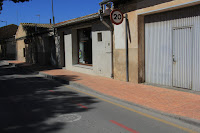And may God have mercy upon your soul

The last time I was in France I was holidaying in Cataluña. It was the sign that said 20 kilometres to France or something that drew us there. Ah, the gay abandon of it all, the sweet adventure of crossing an international frontier just because we could. Free spirits and all that. So last Friday I got a speeding ticket from France written in Spanish. Some French traffic camera seems to think I was there on Christmas Eve 2016. Actually I was in Villena and so was the Mini. I bought a bottle of Laphroaig for me and a bottle of wine for Maggie as a Christmas treat. I paid with a credit card. The credit card bill is now one of my few bits of evidence that I was in Spain. At first I thought the ticket was a scam but a bit of asking around and a bit of checking some websites and it seemed real enough. A 68€ fine or 45€ with a discount for quick payment. I have 45 days from the issue of the ticket to appeal. The paperwork was pretty good; details of what and how and why, method...

